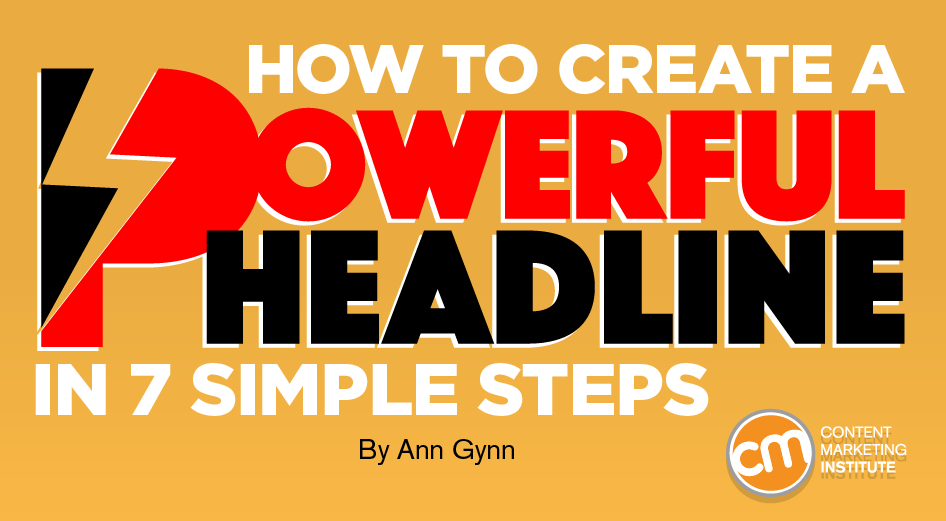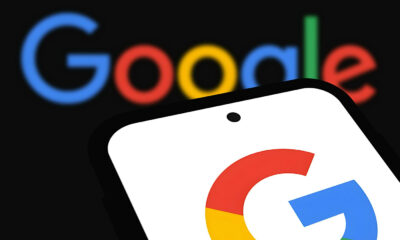MARKETING
How To Create a Powerful Headline in 7 Simple Steps

Updated June 21, 2022
This single most important sentence of an article can’t be found inside the article.
The headline must do more work than any other portion of the content. It must attract interest from the target audience, give potential readers a sense of the article, and demonstrate the brand voice. It may hint at the purpose or context of the article. The language needs to be intriguing, grab attention, and not to mention be accurate. Finally, it needs to be concise.
With so much riding on the headlines, coming up with the perfect sentence to appear above the article can be challenging. Here is a seven-point checklist to help you create effective headlines every time:
1. Identify your brand’s purpose(s) for the content
In content marketing, every piece of content serves a purpose for your company. The content may exist to:
- Increase brand visibility (and clicks) on search engine results pages
- Improve SEO for targeted keywords
- Entice someone to open an email
- Get someone to click on it in an e-newsletter
- Encourage a website visitor to read further
If you have more than one reason, that’s OK. Pick the most important one, then craft the headline (and URL) around it. And, if your process allows you to use different headlines for secondary and tertiary purposes, write those, too.
Write your #headline based on your brand’s purpose for the #content, says @AnnGynn via @CMIContent @semrush. #WritingTips Click To Tweet
2. Detail the audience for the piece
While your content could be seen by anybody and everybody, who do you really want to see it?
If your first instinct is to refer to your personas, resist it. That’s a good step for creating content but not for writing a headline. Instead, recall your brand’s purpose for the content (Step 1) – that often leads you to identify a more niche audience than your standard persona or target audience.
Don’t think about personas when writing headlines. They’re too broad, says @AnnGynn via @CMIContent @semrush. #WritingTips Click To Tweet
For example, let’s say your target audience is human resource managers in manufacturing. Your article about how to reduce the turnover of plant workers speaks to that group. That’s a good (and necessary) start.
The marketing purpose of the article is to get e-newsletter recipients to click on it. Thus, your headline should fit that format and speak to people who have subscribed to your content (they have a general expectation of what type of content you provide). While the topic is relevant to them, they may or may not be interested in it at this time. Therefore, you craft an enticing headline focused on how the content could benefit the reader and add a curiosity factor: Find Out 3 Surprising Ways to Be More Effective in Your Job.
Now, if the article’s primary marketing purpose was SEO, the audience would be people seeking information on the topic who may not be familiar with your brand. The SEO-focused headline for that same content would speak to the audience and industry: How HR Managers Can Reduce Turnover Rates in Manufacturing Plants.
By connecting your audience and your brand’s purpose for the content, you are well-positioned to craft a headline that achieves your goals.
ADVERTISEMENT
The State of Content Marketing 2022 Global Report
500K articles analyzed. 1,500 marketers surveyed. 9 experts interviewed. Download the biggest industry report by Semrush and explore thousands of data points to build a better content marketing strategy.
3. Understand why someone would consume this content
Think about how the content will be viewed – what headline will make this content attract readers?
At this step, your goal isn’t necessarily to explain the purpose of the content – it’s to explain the unique attributes of the content. Look to the lede/introduction to help identify these attributes. What’s the hook? Why would someone stop to view this content? What’s the value for the content consumers? Is it informational, entertaining, actionable, etc.?
They need to have a reason to read your content.
Think about a search results page. With a multitude of options, what prompts someone to click one link over another? If your headline is almost the same as every other result, the searcher likely will click on the first one. But, if your headline stands out in that crowd, the searcher is more likely to pick yours because it’s unique or sufficiently detailed.
If your #headline stands out in a crowd, searchers are likely to click on yours, says @AnnGynn via @CMIContent @semrush. Click To Tweet
Referencing the earlier example, if an HR manager was searching for ways to reduce turnover in his manufacturing plants, here are the headlines he would see:
The first two headlines- “How to Reduce Turnover and Improve Productivity” and “Reducing turnover in 2018 – 3 Strategies That Work” – don’t speak to the manufacturing aspect. The next two headlines – “Tips for Reducing Manufacturing Employee Turnover” and “How to Reduce Employee Turnover in Manufacturing” – are almost the same, only differentiated by the source identification. The final headline, Reducing Employee Turnover in a Multi-site Manufacturing Company, is unique because it specifies the type of manufacturing company.
Now, with the first three steps on the checklist complete, you are well-positioned to follow the next steps to write the headline.
HANDPICKED RELATED CONTENT:
4. Keep it accurate
Unfortunately, this step is necessary to put on this checklist. For the sake of getting clicks, headline writers sometimes forsake, hedge, or sensationalize the truth. Always ensure that your headline is accurate both in fact and sentiment.
5. Pack a punch
A powerful headline includes:
- Active verbs
- Concise language
- Blend of familiar and unexpected words
- Clear benefit for intended audience
Going back to the example for HR managers about reducing turnover, look at these two headlines:
The first headline is strong. It uses an active verb (decrease) and concisely explains what the content is about. HR managers instantly know what they can expect from the content (how to reduce turnover) and that it speaks to them (at your manufacturing plant).
The second headline isn’t as strong. It doesn’t use an active verb or clearly state what the article is about. On the positive side, it offers an unexpected twist (hiring as the solution), but the language is so muddled it’s hard to assess that at first glance. (Using three words ending in “ing” creates a visual mess. The reader must work harder to discern the meaning of the headline.)
Revise your headlines until they’re clear, concise, and powerful for your intended content consumers.
Revise headlines until they’re clear, concise, & powerful for intended #content consumers, says @AnnGynn via @CMIContent @semrush. #WritingTips Click To Tweet
6. Use your voice
When a headline promotes content from your brand, the headline should reflect your brand’s voice. Is it straightforward, or does it incorporate a touch of humor (or maybe snark)? Are your audience members kept at arm’s reach (i.e., third person) or treated like friends or at least acquaintances (i.e., second person)?
Let’s look at Globoforce, a cloud-based, human capital management software solution company. As its website details, “Globoforce got started in 1999 with a central belief in the transformative power of positivity.” Its corporate attitude materialized in a question: What if we shifted our focus from data collection to human connection?
That positive, confident voice that focuses on people is reflected in its headlines, such as:
- 12 Surefire Tips To Reduce Employee Turnover (blog)
- 5 Learning Trends You Should Adopt in 2019 (blog)
- All the Feels: Setting the Stage for Employee Experience (podcast)
Your brand voice is unique – make sure it comes through in your headlines.
7. Go before a sounding board
Sure, you can A/B test your headlines (it’s a good idea). But that’s a live test. Test headlines before you publish. Ask for feedback from your team (or, even better, a few of the intended readers). Share a few headline options (don’t share the content itself). Then ask:
- Would you click on this headline to read more?
- Why?
- What do you think the content is about?
Test #headlines before you publish, says @AnnGynn via @CMIContent @semrush. #WritingTips Click To Tweet
Look through the answers to find the ones that best match your original intent and use those headlines.
7 check marks for great content marketing headlines
Headline writing is never easy. In content marketing, it’s even more challenging. Not only does the headline have to explain what the content is about (or entice the reader), but it also has to contribute to the business goal of the content.
To get it right, it helps to define your marketing reason for the content, your intended audience, and the unique reason its members want to read this particular content. By getting that right, you’re well on your way to crafting an accurate headline that reflects your brand’s voice and packs a punch.
And that’s the formula for any great headline.
HANDPICKED RELATED CONTENT:
Cover image by Joseph Kalinowski/Content Marketing Institute









![How to Create A Website to Sell Products In 8 Steps [+6 Expert Tips] How to Create A Website to Sell Products In 8 Steps [+6 Expert Tips]](https://articles.entireweb.com/wp-content/uploads/2024/10/1727868370_How-to-Create-A-Website-to-Sell-Products-In-8.webp-400x240.webp)
![How to Create A Website to Sell Products In 8 Steps [+6 Expert Tips] How to Create A Website to Sell Products In 8 Steps [+6 Expert Tips]](https://articles.entireweb.com/wp-content/uploads/2024/10/1727868370_How-to-Create-A-Website-to-Sell-Products-In-8.webp-80x80.webp)








You must be logged in to post a comment Login